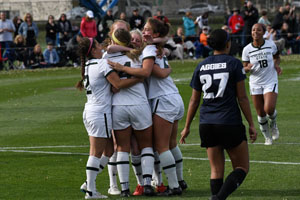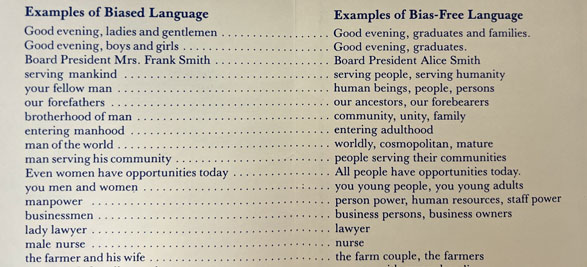June 23, 2022 marks the 50th anniversary of Title IX, part of the Education Amendments of 1972. It reads,
No person in the United States shall, on the basis of sex, be excluded from participation in, be denied the benefits of, or be subjected to discrimination under any education program or activity receiving Federal financial assistance.
The purpose of Title IX is to ensure gender equity in education. We often think about Title IX in the context of advancing women’s sports, but it also protects students from sexual assault and harassment and is used to prevent discrimination based on gender identity and sexual orientation in educational settings.

When Title IX was passed, the Colorado Department of Education created the Title IX/Sex Equity Program, which published several training guides and handbooks designed to help educators implement the new rules and question their own biases. The first, a short pamphlet titled Why Title IX? (1978), explains the necessity of passing legislation to ensure gender equity in education. They mention many issues that still exist today, like the gender wage gap and the lack of women in school leadership roles.
Following the introductory pamphlet, the Title IX/Sex Equity Program held a series of workshops to help teachers, school counselors, administrators, and community members plan to implement Title IX. The State Publications Library holds both the participant workbooks and the training manuals for these workshops. The workshops focused on breaking down stereotypes and developing actionable plans to increase equity in Colorado’s schools. This series also includes student resources like the Title IX Directory of Career and Professional Women in Colorado, which listed the contact information for women working in various fields who could serve as mentors or models for high school students.

The Title IX/Sex Equity Program continued to release publications focusing on gender equity in the years following Title IX’s passage. Sports Need You (1984) provided a model for increasing the number of women and minorities in sports leadership, including coaching, officiating, administration, and governance. The pamphlet, How to plan a bias-free graduation ceremony (1985) contains tips that are still relevant today. For example, how many people have been to a graduation ceremony in which men and women were required to wear differently colored robes? This requirement alienates those who don’t conform to the gender binary and implies that the group wearing lighter-colored robes (typically women) are less serious than those in the darker robes. Ceremonies can easily be made more inclusive by having everyone wear the same color robes.
Looking through these publications provides a chance to reflect on the progress that has been made around gender equity in education, as well as on the issues that still exist. These items are all available to check out by anyone in Colorado. Contact us at spl@cde.state.co.us or (303)866-6603 to request a copy.
- Celebrating Colorado’s immigrant heritage - June 27, 2025
- Colorado’s Scenic and Historic Byways: Guanella Pass - June 6, 2025
- Who is protecting Colorado’s pollinators? - May 16, 2025